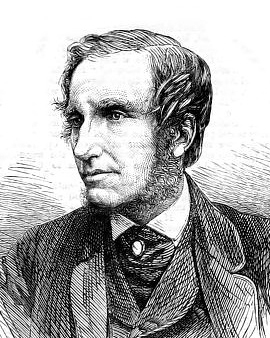


London, in 1811: Edward William Cooke was born in Pentonville. A world that could offer him so much, where he could give free rein to himself and his longing. His father, George Cooke, was a well-known line engraver and the forerunner of his passion, which was practically born into his cradle, both through him and his uncle, William Bernard Cooke, who was also a line engraver. Growing up in an environment of artists, he discovered his love of drawing and the art of engraving at a young age and perfected his passion over the years accordingly. His simultaneous preference for sea motifs (mainly sailing ships) eventually led to the publication of his "Shipping and Crafts", a series of completed copperplate engravings, at the age of 18. He also benefited from the advice and experience of Clarkson Stanfield and David Roberts, two employees in his father's firm. However, it was not until 1833 that he began painting in oil. Already at this time he was essentially influenced by realism.
This style originated in the middle of the 19th century and has two special features: On the one hand, the factual depiction of people or scenarios and on the other hand the associated social or political statement. Edward William Cooke travelled at home and abroad in this context, including the Netherlands in 1837 because of his love for Dutch naval artists. He was particularly attracted to the Isle of Wight, during whose visit he studied fishing boats and lobster pots as well as breakwaters and the small wooden jetties in detail.
In the following 23 years he travelled a lot, but always returned home. During this time he created one of his most successful works, "Beaching a Pink in heavy weather at Scheveningen", which he exhibited at the Royal Academy in 1855. His further travels took him to Spain, Venice, North Africa and Scandinavia. But Cooke was not only interested in painting, but also in natural history. In the gardener James Bateman he found a good friend and advisor, whom he helped to design and decorate the gardens of Biddulph Grange in Staffordshire in the 1840s. His particular love was rhododendrons and orchids.
In 1858 he was elected to the National Academy of Design as an honorary academician. Edward William Cooke died on 4 January 1880 at the age of 68.

London, in 1811: Edward William Cooke was born in Pentonville. A world that could offer him so much, where he could give free rein to himself and his longing. His father, George Cooke, was a well-known line engraver and the forerunner of his passion, which was practically born into his cradle, both through him and his uncle, William Bernard Cooke, who was also a line engraver. Growing up in an environment of artists, he discovered his love of drawing and the art of engraving at a young age and perfected his passion over the years accordingly. His simultaneous preference for sea motifs (mainly sailing ships) eventually led to the publication of his "Shipping and Crafts", a series of completed copperplate engravings, at the age of 18. He also benefited from the advice and experience of Clarkson Stanfield and David Roberts, two employees in his father's firm. However, it was not until 1833 that he began painting in oil. Already at this time he was essentially influenced by realism.
This style originated in the middle of the 19th century and has two special features: On the one hand, the factual depiction of people or scenarios and on the other hand the associated social or political statement. Edward William Cooke travelled at home and abroad in this context, including the Netherlands in 1837 because of his love for Dutch naval artists. He was particularly attracted to the Isle of Wight, during whose visit he studied fishing boats and lobster pots as well as breakwaters and the small wooden jetties in detail.
In the following 23 years he travelled a lot, but always returned home. During this time he created one of his most successful works, "Beaching a Pink in heavy weather at Scheveningen", which he exhibited at the Royal Academy in 1855. His further travels took him to Spain, Venice, North Africa and Scandinavia. But Cooke was not only interested in painting, but also in natural history. In the gardener James Bateman he found a good friend and advisor, whom he helped to design and decorate the gardens of Biddulph Grange in Staffordshire in the 1840s. His particular love was rhododendrons and orchids.
In 1858 he was elected to the National Academy of Design as an honorary academician. Edward William Cooke died on 4 January 1880 at the age of 68.
Page 1 / 2






